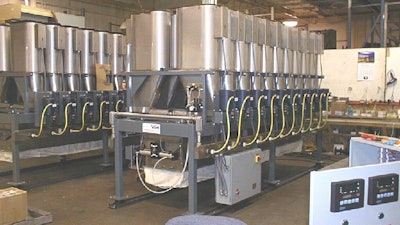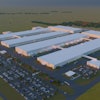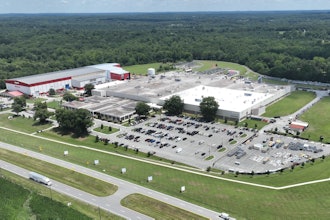
Do you need to purchase manufacturing equipment, but don't know what specific pieces you must have in order to get the job done quickly, correctly, and safely? Here are the things you need (and the things you need to consider) before making a business investment in new processing equipment.
Batch Process & Continuous Flow Equipment
Depending on your specific needs and economy of scale, batch process equipment or continuous flow equipment may be used for processing food or feed.
Batch process equipment is used when processing a limited quantity or when specialized products require precise tracking of each processed batch in order to comply with safety and regulatory practices.
The advantages of using batch processing are flexibility, ease of recovery, quality is easily controlled, it is conducive to expansion, and there may be lower investment costs.
Examples of batch process equipment include:
- Scales (major, minor, micro, liquid)
- Bulk sacks discharger
- Individual Ingredient feeders
- Continuous mixers
Continuous flow equipment is used to increase production and efficiency when manufacturing certain ingredients, helping to eliminate interruptions by utilizing an optimal combination of compounding, mixing, crystallizing, conveying, encapsulating, and continual metering of the ingredients.
This is done when operational variables such as flow rates, agitator speed, tank levels, pressures, and temperatures are controlled.
The advantages of using continuous flow processing are that it requires fewer skilled operators, has low variable costs, and offers high product volume.
Examples of continuous flow equipment include:
- Dry Solids Mass Flow Meter
- Weigh Screw Feeder
- Conveyors
- Continuous Blender
- Mass Flow Meter
Liquid Handling Equipment
Many times, the manufacturing process requires the use of liquids. In order to store and apply liquids properly and without slowing down or interrupting your operations, the proper equipment must be used.
- Storage: Stainless steel or polyethylene containers. Choose from models that are insulated and temperature controlled when required by your materials.
- Coating Systems: Gently coats individual pieces with any type of liquid such as flavorings and sealants. This equipment must include food-grade components and be easy to clean and sanitize. Spinning disks are superior to spray nozzles since nozzles can clog and cause repeated downtime. It’s also helpful to have an enclosed drum to contain the spray.
- Pumps, Meters, and Valves: Choose the correct components for your process based on flow rates, pressure relief, and calibration controls.
Fillers
When it comes time to bag your finished product, a bag filler is an essential piece of equipment. Not only do they eliminate flaws and waste but, most importantly, they prevent dangerous situations from taking place.
When choosing a bag filler, look for one that can accommodate any standard bag size. It should have controlled flow, dust control, and an adjustable top frame. An electric chain hoist helps to deliver quicker integration and higher efficiency.
Control System
A computer-based batch control system eliminates the need for custom programming, therefore eliminating errors and automating much of your process.
It’s best to purchase an industry-specific control system which has all the required programs already built in, making for a seamless integration. These programs and controls should include formulas, inventory management, real-time displays, ethernet communications, bar code scanning, verifications, and remote access.
Purchasing manufacturing equipment is an investment so it’s important to choose each specific piece wisely based on need and your expected ROI. In order to gain a competitive advantage, it’s wise to purchase equipment that will last for decades with very little required maintenance. Also, consider equipment that employs new technological advances to give you an added boost in time and money savings.
By improving your processes with the correct systems and machinery models, you’ll earn that crucial competitive advantage.
Learn more about processing equipment and what it can do to increase production and efficiency.





















